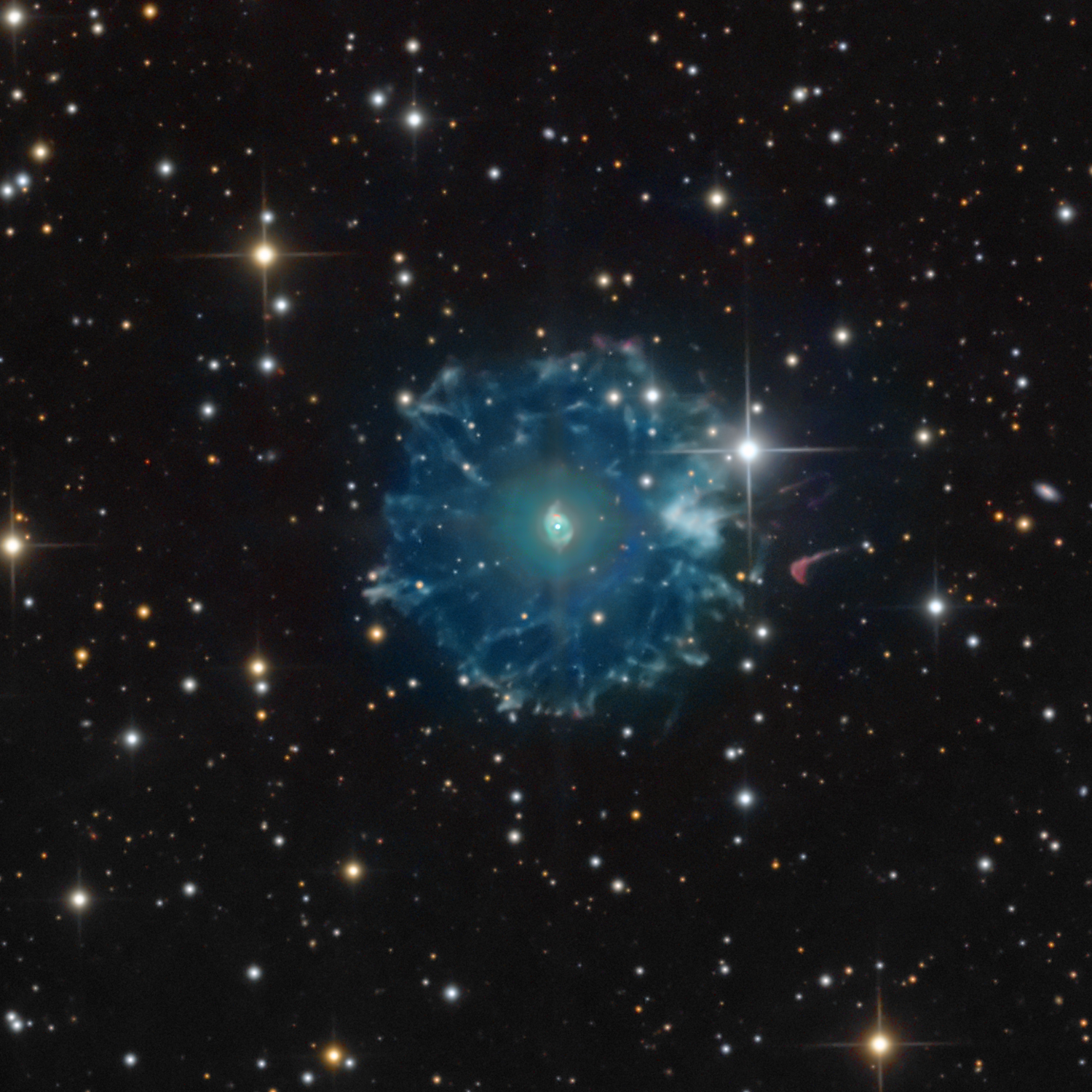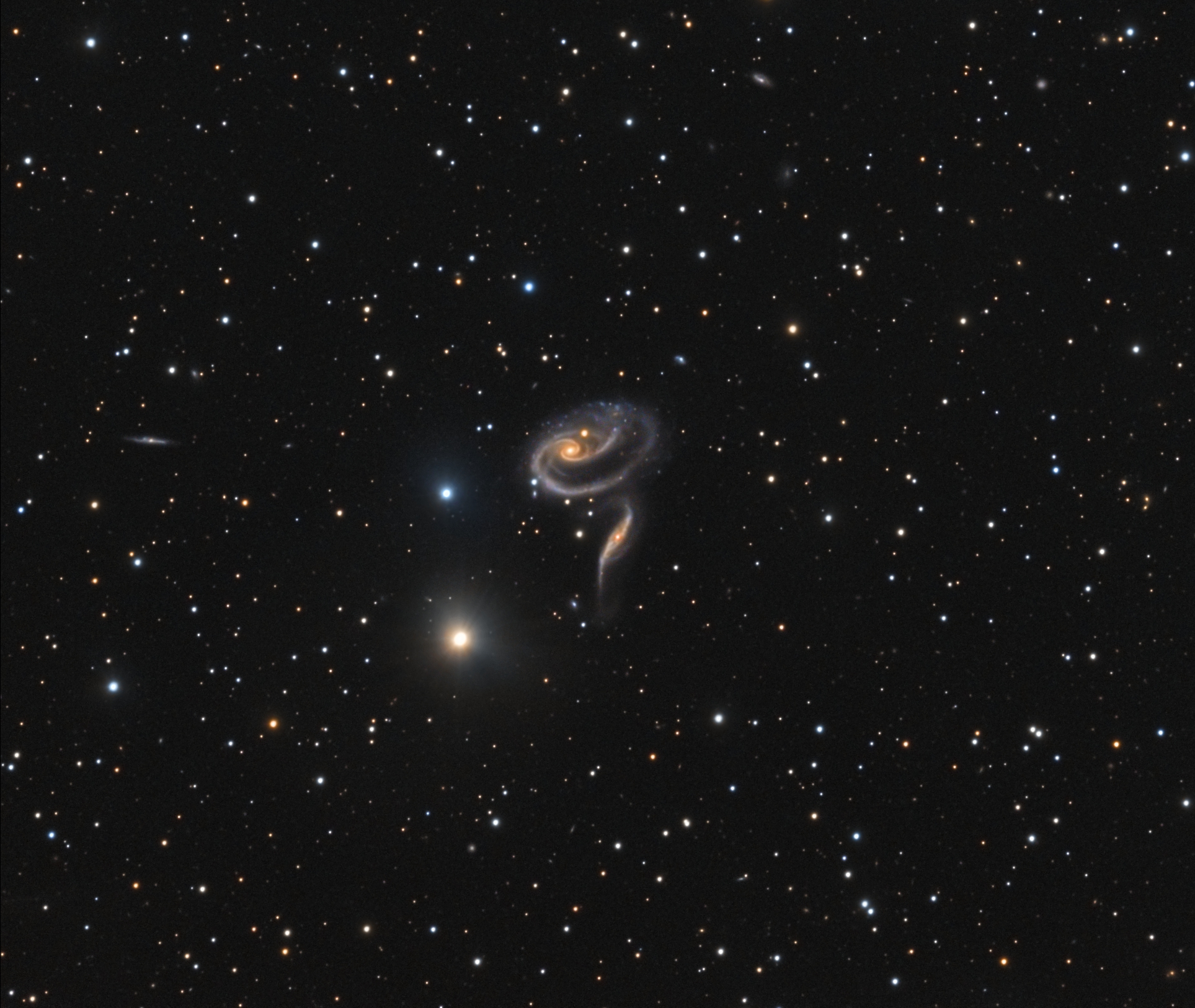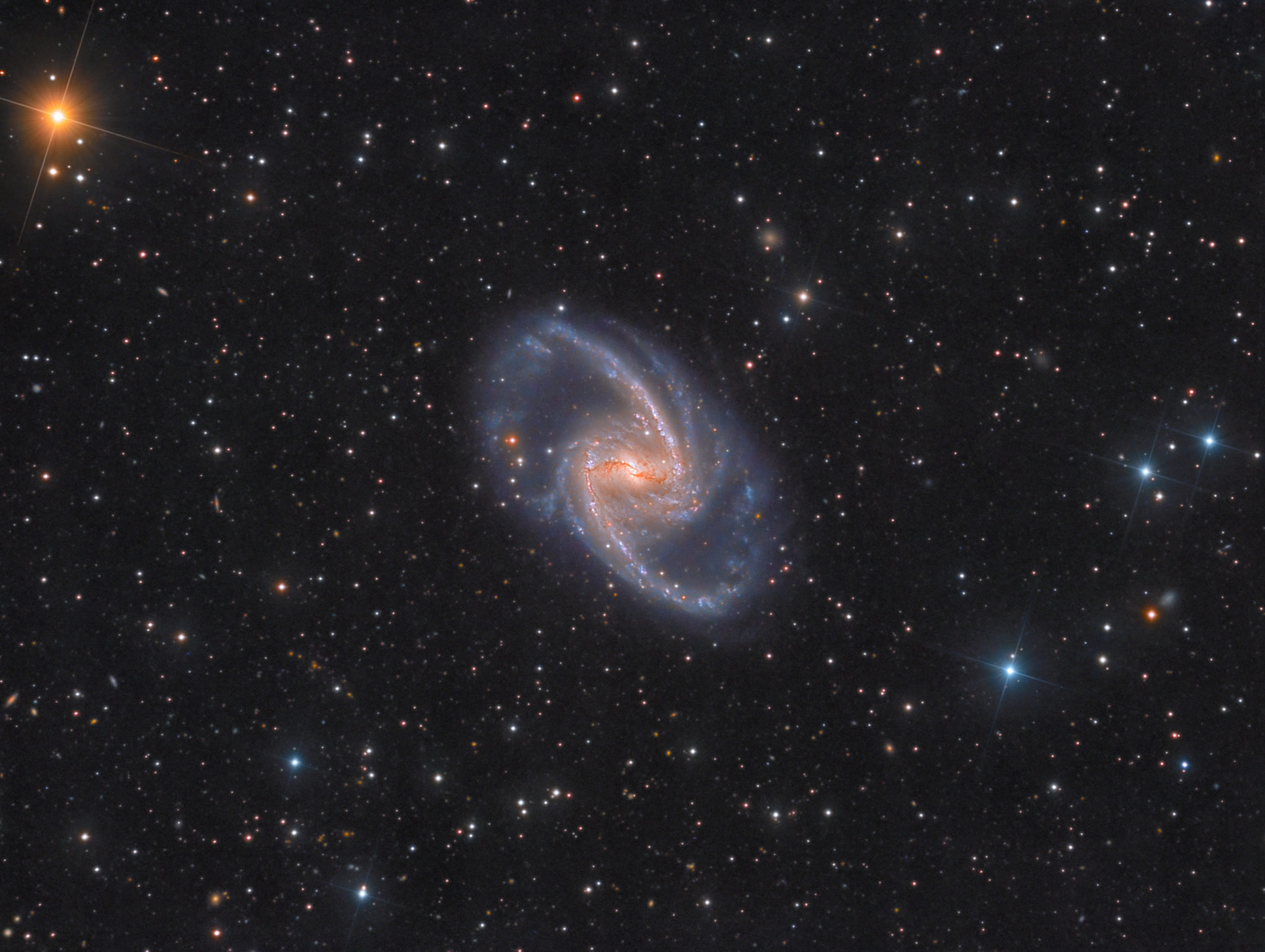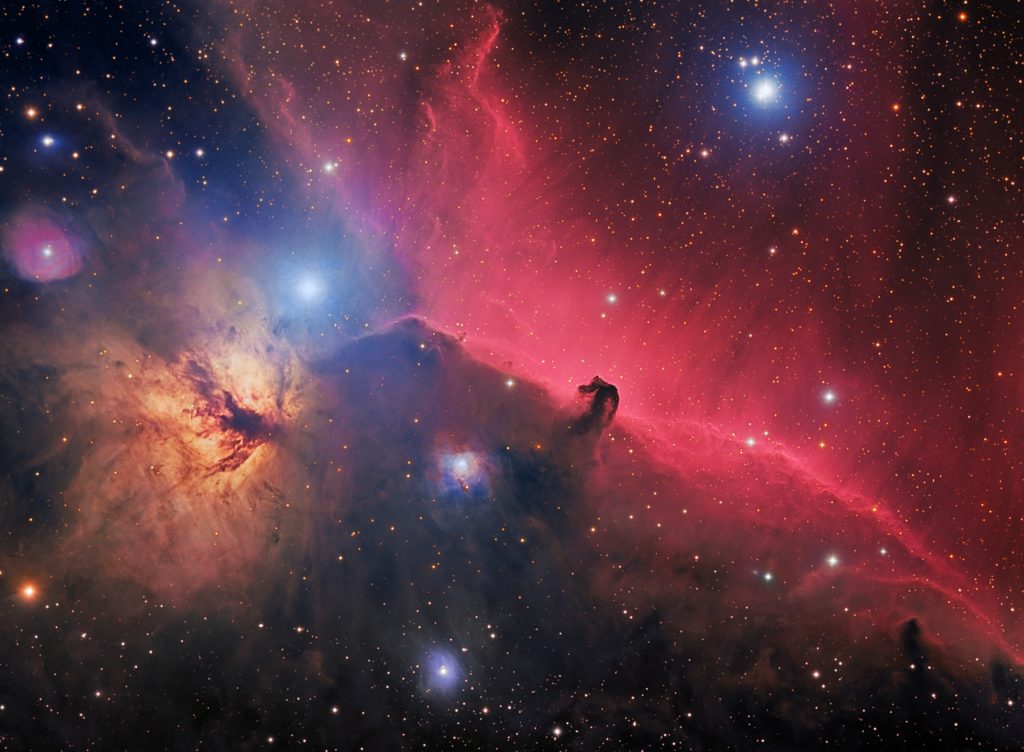It is with great pleasure we can finally announce the winner of our 2020 astrophotography competition. Throughout 2020 you submitted images of an incredible standard, meaning our expert panel had their work cut out for them yet again this year. As always we have a winner and two runners up, but additionally, we have two impressive highly commended too.
First, we would like to thank each and every one of you for support and dedication to the hobby. Each image represents hours of consideration, imaging and processing, which goes on to inspire the astroimaging community along with a new generation of astronomers. Keep up the good work!
2020 Astrophotography Competition Winner
Bruce Waddington – NGC 6543, Cat’s Eye Nebula – QSI 640

About the image: The Cat’s Eye image was a major challenge for me and I started to think of it as “the target from hell.” The difficulty is the huge dynamic range of the object – the core has an apparent visual magnitude of 8 with a very hgh surface brightness, but the outer extensions are very faint. So I had to approach it almost as two separate targets. The core needed exposure times of 1-2 minutes to avoid saturation while the outer nebula extensions needed the 10-minute exposures I normally use for deep-sky targets. To make matters harder, it’s a summertime target in the northerm hemisphere which coincides with the annual monsoon season at my observing site in New Mexico. Consequently, I collected data during 9 nights spread across two years, 2019 and 2020. The final integration has 220 minutes of LRGB, Hydrogen-alpha, and Oxygen-3 for the core; and another 15 hours of LRGB for the outer nebula areas. Creating a composite image that looked natural and still retained all the structural and color detail was equally challenging, and I would estimate I spent another 20 hours doing that. Post-processing was done with CCDStack, PixInsight, and Photoshop CS5. All of the imaging was done from my installation at SkyPi Remote observatories in New Mexico using a Planewave 12.5” telescope and my QSI-640ws camera working at f/8.
About the astrophotographer: Bruce began astro-imaging 15 years ago and has been using QSI Cameras since 2013. Bruce also spends plenty of time writing free software for astro-imaging including heavy involvement in the PHD2 open source telescope guiding software project.
Runners Up
Vlad Onoprienko – Arp273, Flower of the Universe – QSI 640

About the image: 9” Mak-Cass “Santel” (3000 mm focal length, scale 0.51 arcs sec. per pixel)
QSI-640i. Mount – EQ8 Synscan.
LRGB – composition,720:180:180:170. Almost 21 hours in total
Baader Planetarium filters.
Used programs: MaxIm DL 5, PHD2, PixInsight
This is a photo Arp 273 Image of the day on Astrobin (click here)
About the astrophotographer: My name is Vlad Onoprienko, 47 years old. I live in Krasnodar, Russia. I have been studying amateur astronomy since I was 13. In recent years, I have been interested in astrophotography of deep sky objects.
Rolf Olsen – NGC1365, A cosmic maelstrom in fornax – QSI683

About the image: This deep image shows the large majestic barred spiral galaxy NGC 1365 located in the southern constellation of Fornax at a distance of 56 million light-years. The galaxy is significantly larger than our own Milky Way, with the two main spiral arms spanning up to 200,000 light-years. The symmetrical arms curve around the entire galaxy forming an almost ring-like halo. Together with the prominent central bar the arms outline an elegant Z, making NGC 1365 one of the most striking and beautiful galaxies in the sky.
Bright knots of young star clusters and red emission nebulae dot the entire galaxy, and in the centre dark dust lanes trace around a cosmic maelstrom. The active nucleus of NGC 1365 hosts a supermassive black hole with the mass of approximately 2 million solar masses and rotating near the speed of light.
Visible here in this deep exposure are several faint streams extending out from the main arms, especially along the Western and Southern edge of the galaxy (3 to 6 o’clock position). These may be remnants of mergers with smaller dwarf galaxies or perhaps structures within the spiral arms themselves.
Several supernovae have been recorded in NGC 1365, most recently SN2012fr discovered by Alain Klotz (TAROT La Silla telescope) on 27th October 2012. See my previous image of NGC 1365 with the supernova SN2012fr here
In the background the entire field of view is littered with distant galaxies of various sizes and shapes. Many of these can be seen through the spiral arms and tidal streams of NGC 1365. Even a couple of very distant galaxy clusters can be seen. Many of these background galaxies are so far away that their light is visibly reddened because of the cosmological redshift. Judged by their colour and apparent size the faintest of these remote galaxies lie several billion light-years away.
About the astrophotographer: I have been interested in astronomy for as long as I can remember and have observed the night sky visually for decades with both binoculars and telescopes. In 1990 I got my first telescope, a 60mm alt-az refractor. A couple of years later I upgraded to a 100mm refractor on an equatorial mount and in 1995 I got a 10 inch f/5 Newtonian reflector. This telescope was used extensively for both planetary and deep sky observing and in 2003 I ventured into the world of astrophotography and began taking images with a long-exposure modified webcam. In 2011 I built a Serrurier truss 12.5 inch f/4 Newtonian and then upgraded the webcam to a highly sensitive QSI683wsg CCD camera which I now use to take all my images.
The modified webcam was a great opportunity to learn as it required me to really work on developing processing skills in order to achieve good results. It also forced me to think carefully about my choice of subjects, given the webcam’s limited resolution and low sensitivity. My later images taken with the CCD camera greatly benefited from these early learnings.
I enjoy photographing all astronomical subjects but perhaps my favourites are galaxies, especially peculiarly shaped ones or distant galaxy clusters, or those engaged in dramatic mergers such as the famous pair of Antennae galaxies. I enjoy taking images that are unusual, either being of a rarely imaged object, or perhaps a familiar object presented in a new way. Among my images you will find exotic objects like the circumstellar disc of Beta Pictoris, gravitational lenses, quasars, distant galaxy clusters and extragalactic globulars. I find that these obscure targets often have a very interesting story to tell.
Highly Commended
Last, but by no means least, here are the stunning images from our highly commended section.
Again, we offer our congratulations again to Bruce who wins a camera of his choice, and to our runners up who win an accessory of their choice.
Wishing you all clear skies.

